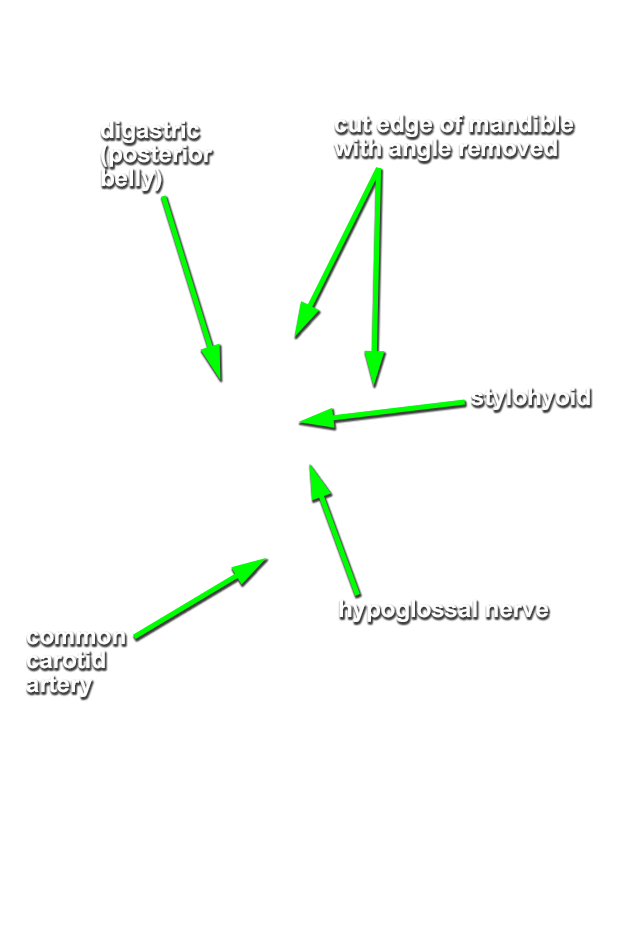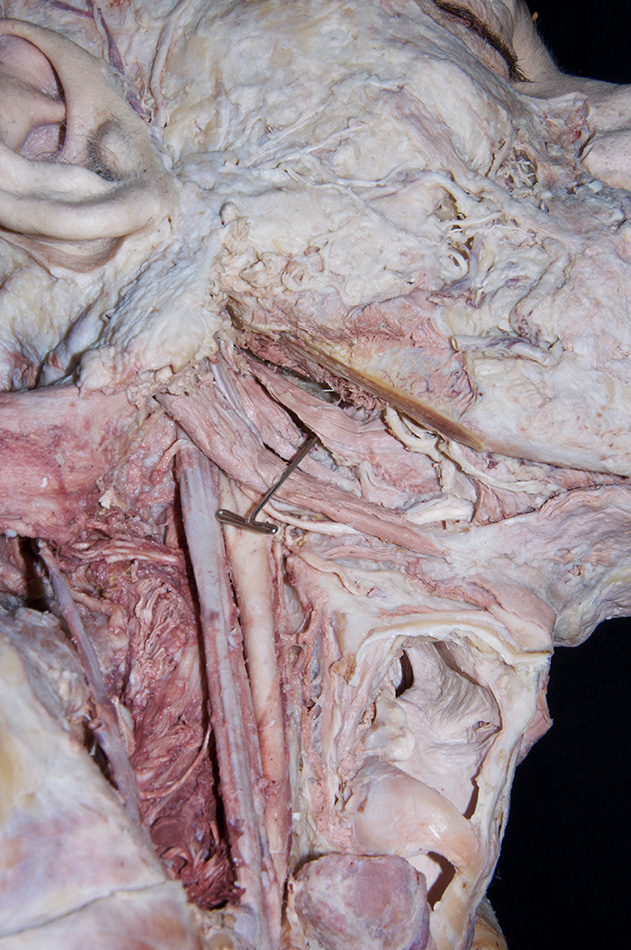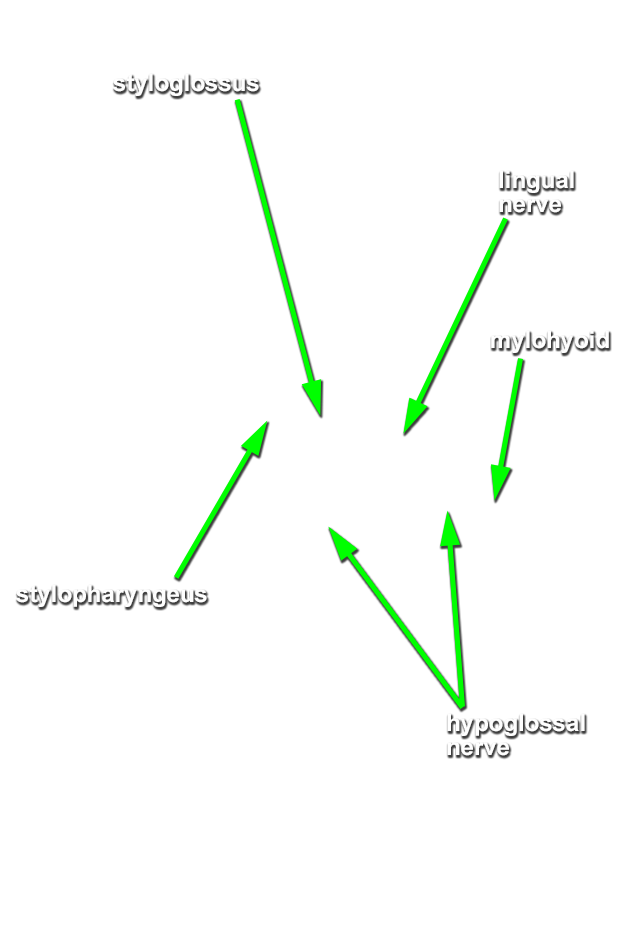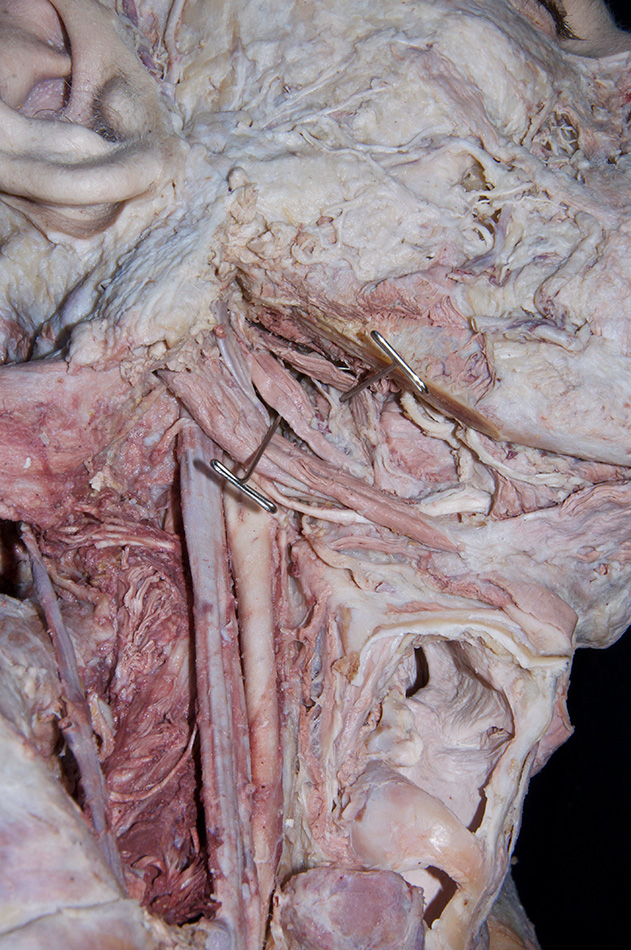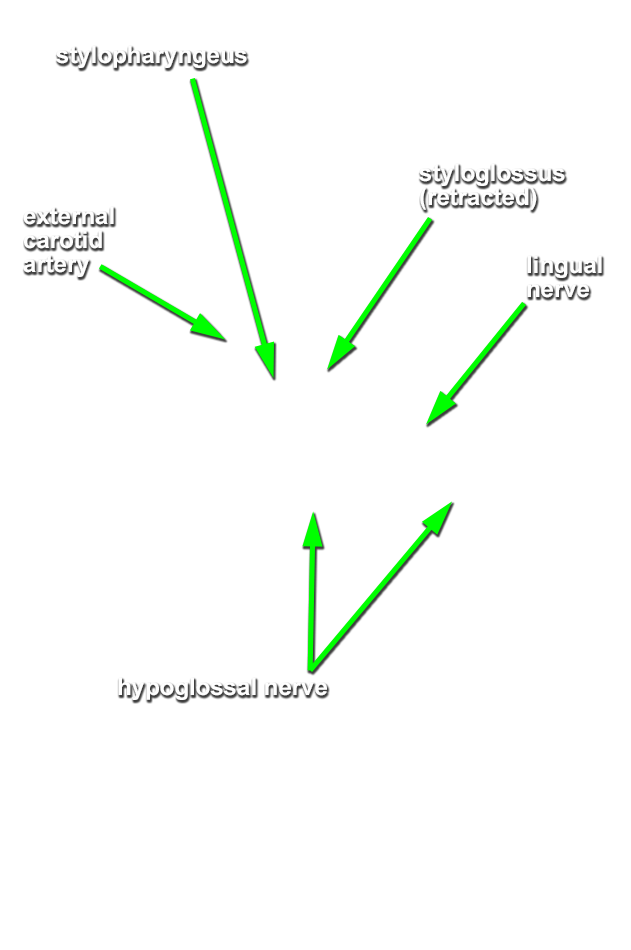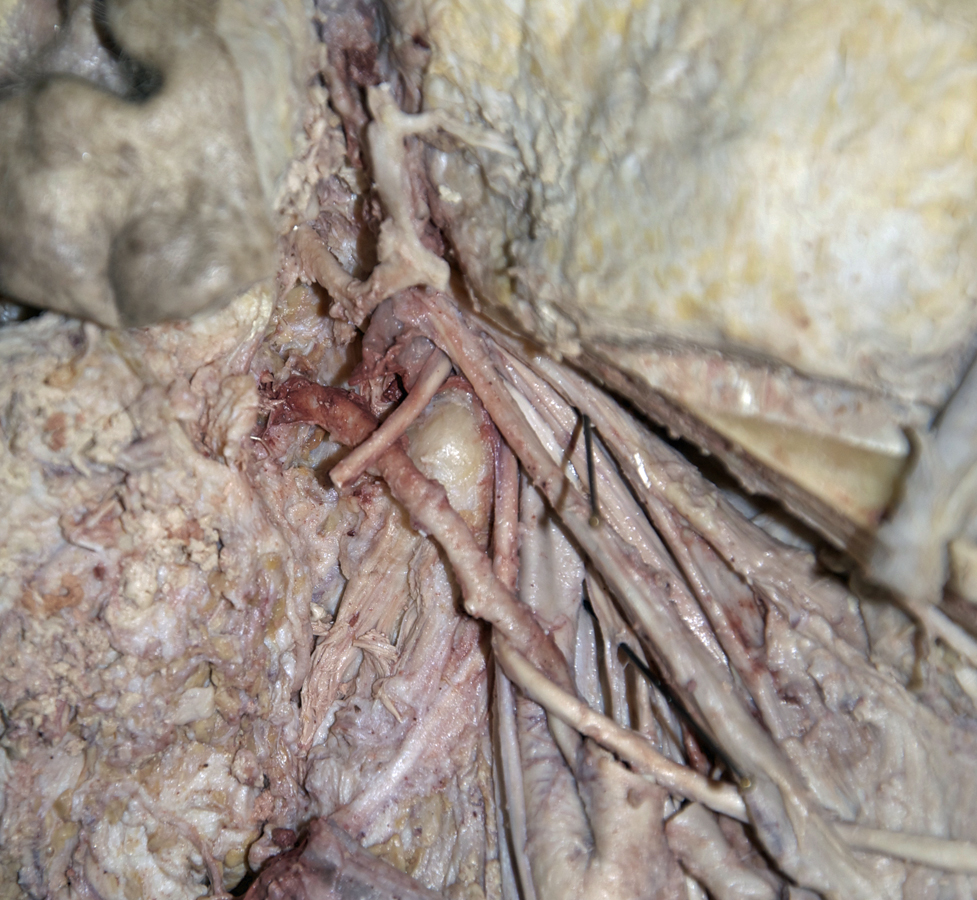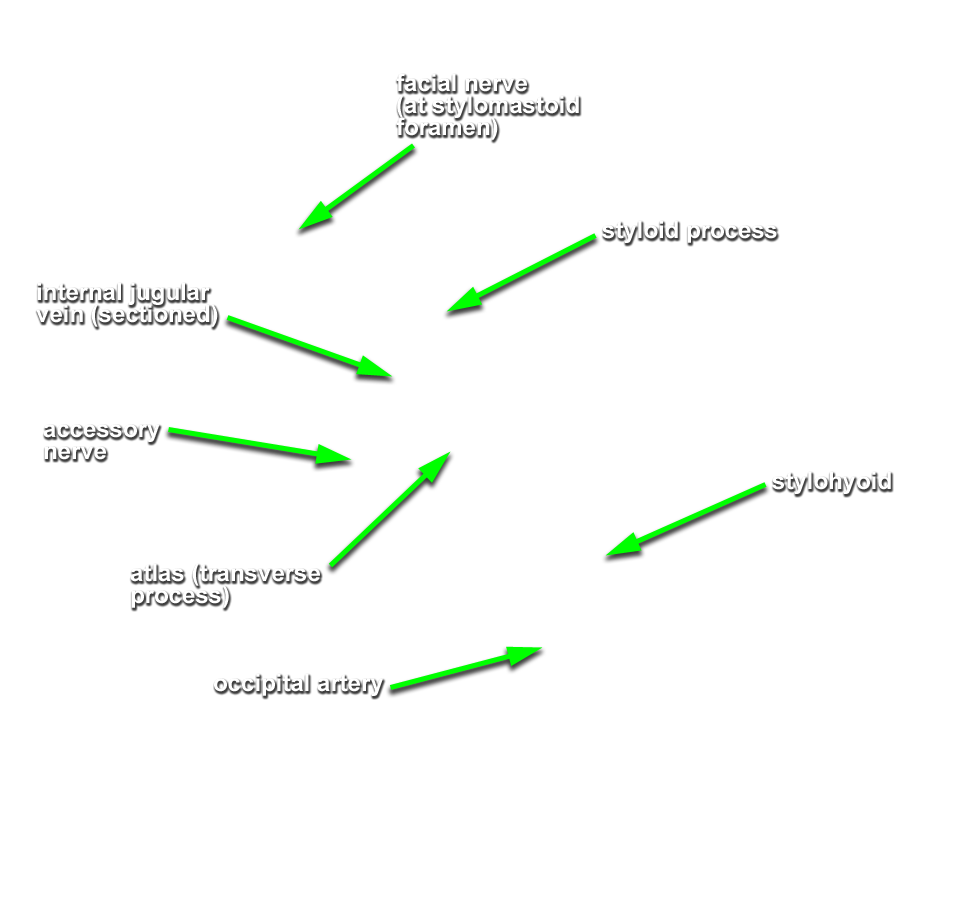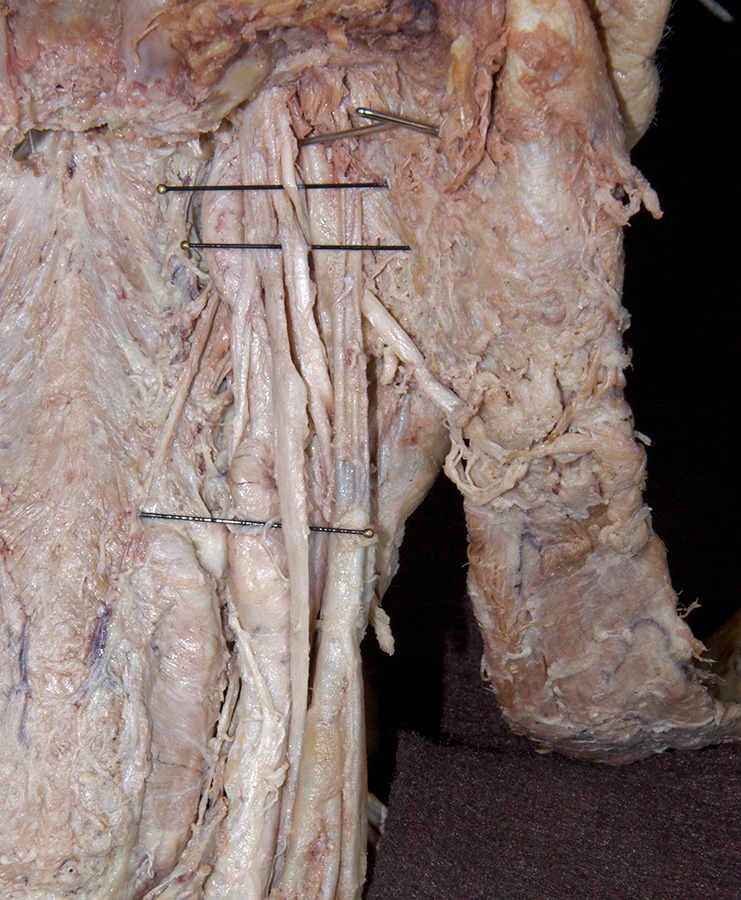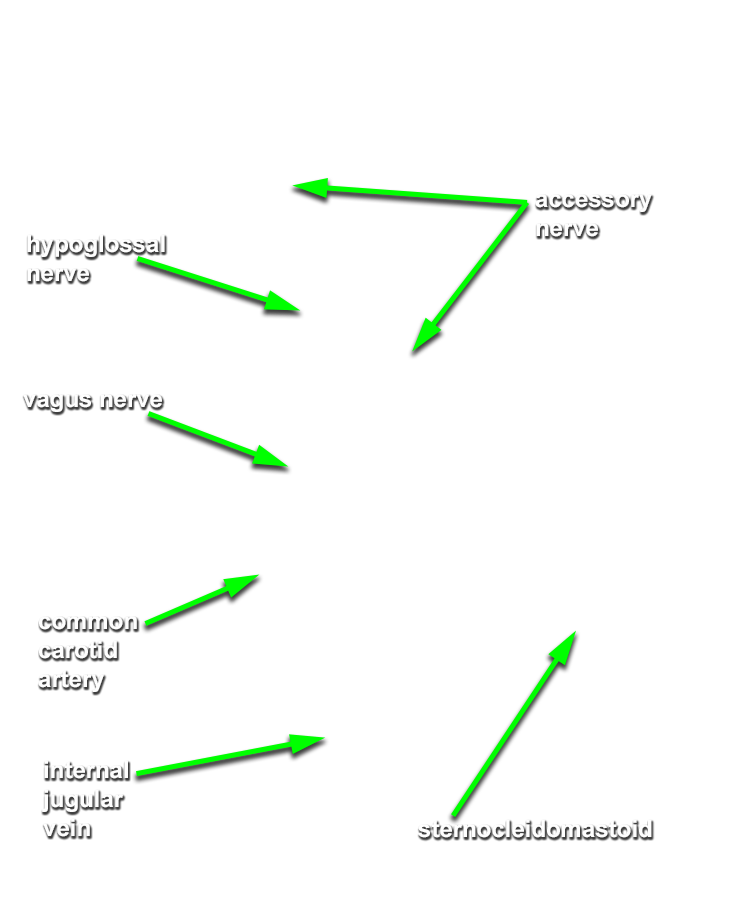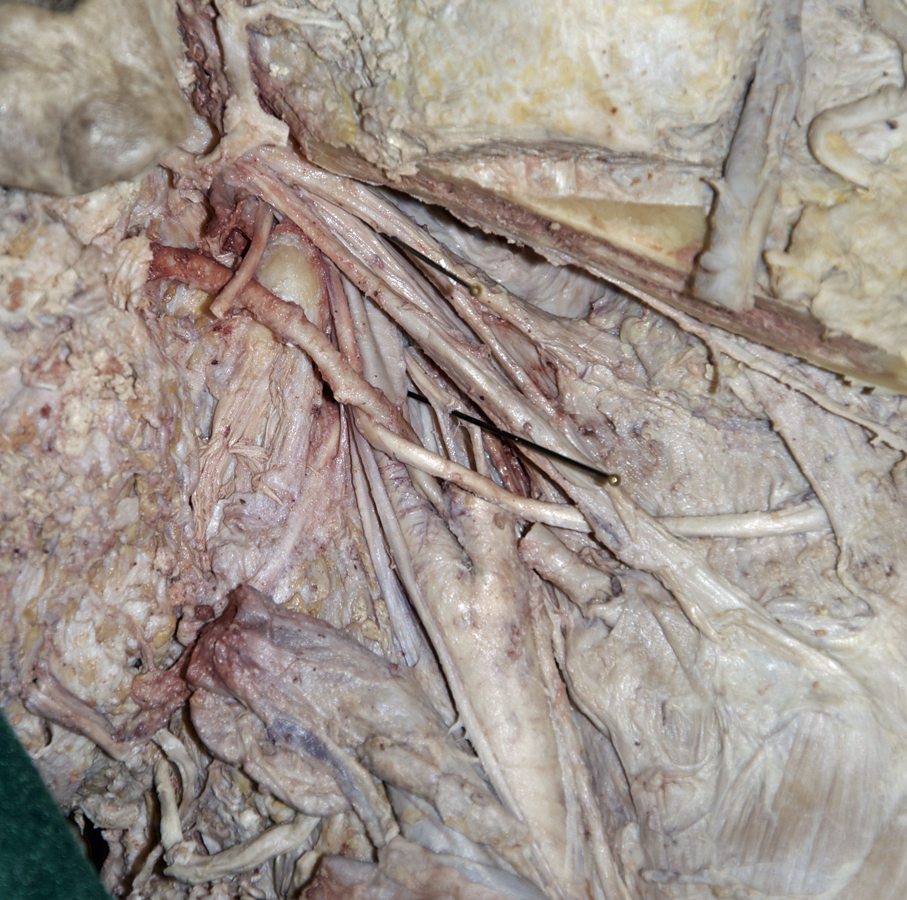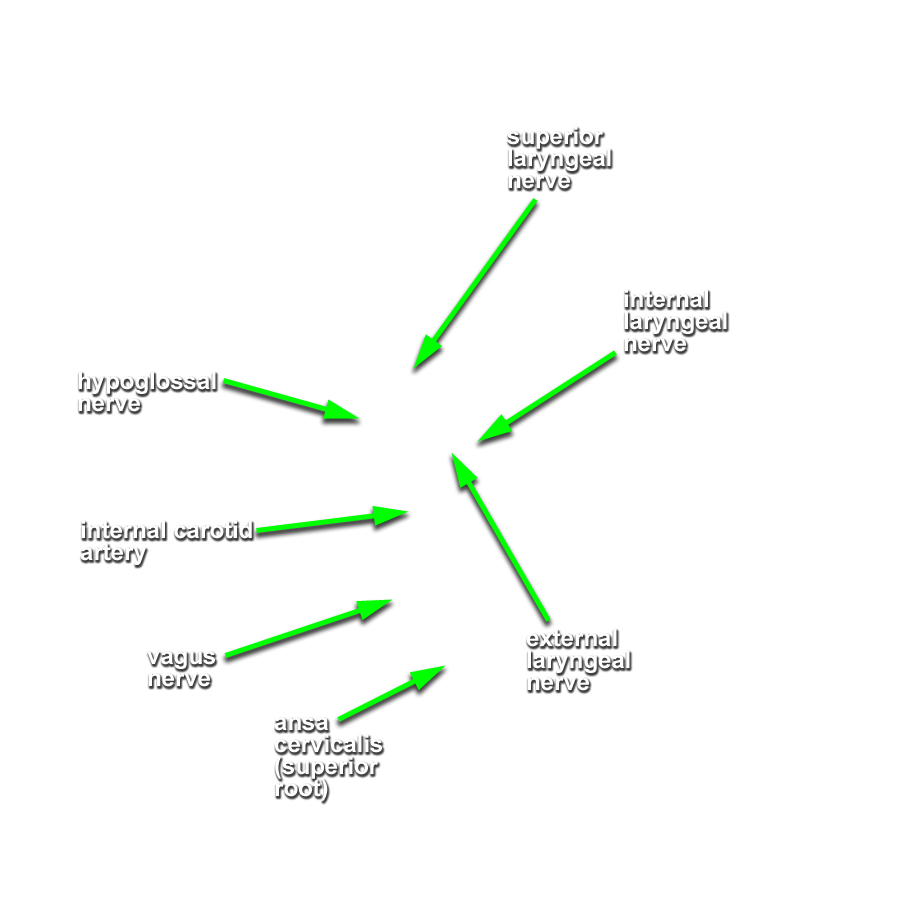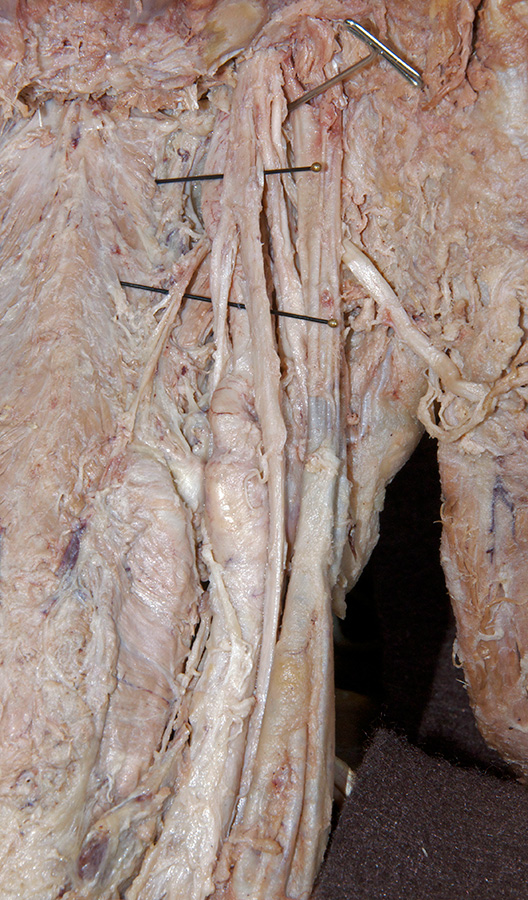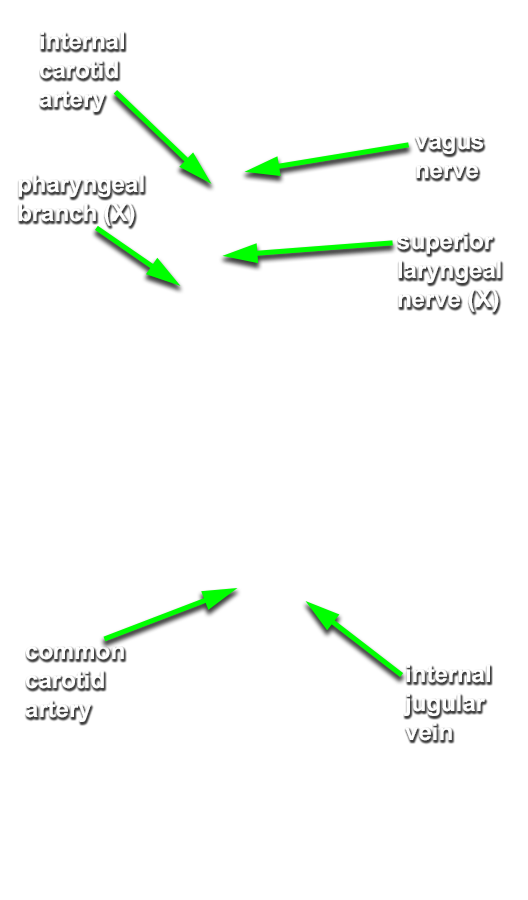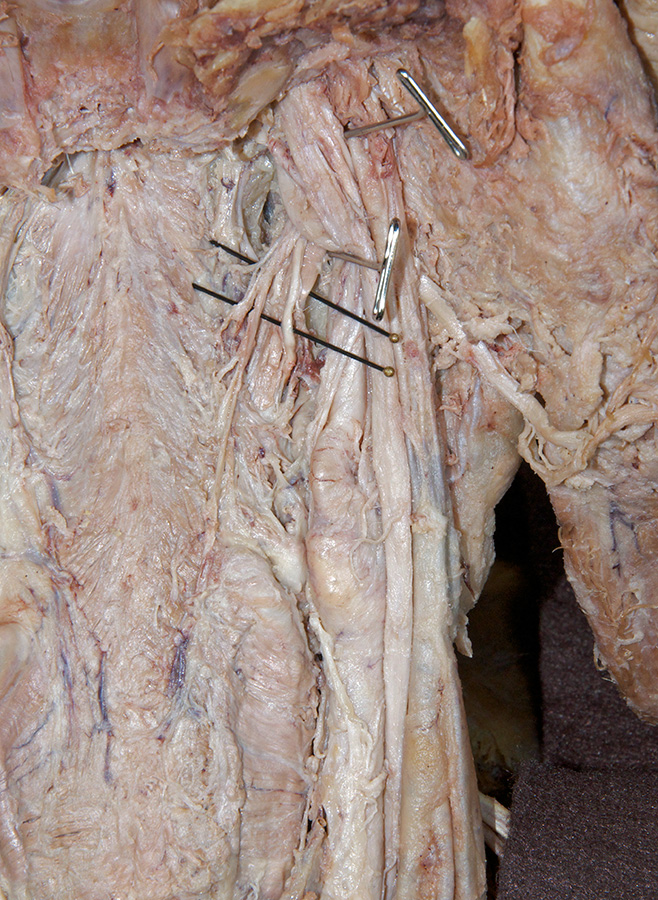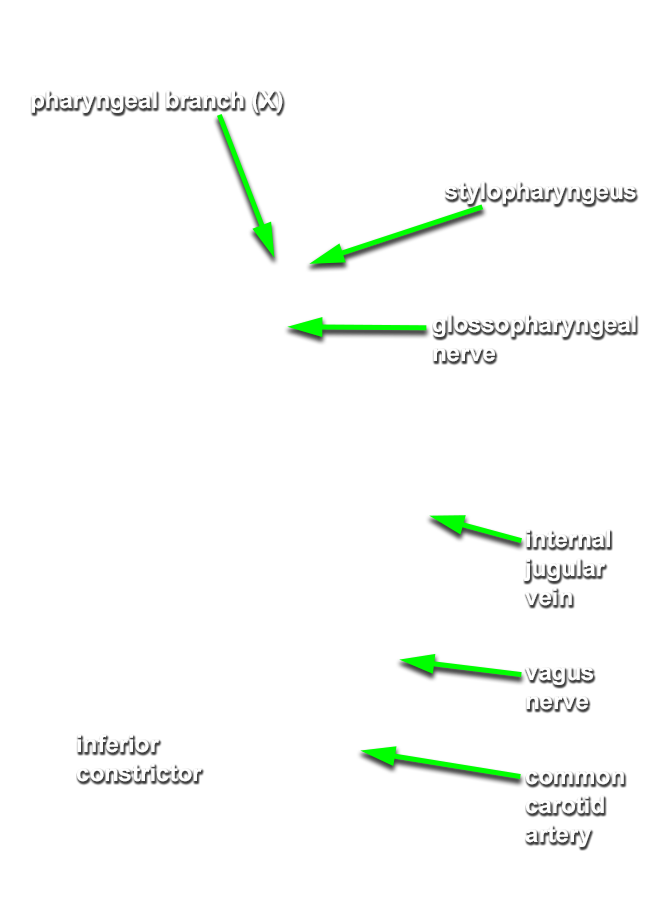Identify the proximal segments of the cranial nerves emerging from the base of the skull.
- Identify the stylohyoid, styloglossus and stylopharyngeus muscles attaching to the styloid process. (G 8.28;N 70;Gl 44.28)
- Identify and trace the facial nerve to the stylomastoid foramen. (G 7.47C;N 71;Gl 40.24) The stylomastoid foramen is typically in the same plane as the posterior border of the external auditory meatus.
- Identify and trace the accessory nerve in the superior direction until it approaches the jugular foramen. (G 7.47C;N 32;Gl 44.30)
- Identify and trace the
hypoglossal nerve (superficial to the internal and external carotid arteries) in the superior direction until it appears to become a branch of the vagus nerve. (G 7.47C;N 71;Gl 44.30)
Important Relationship
- The hypoglossal nerve passes lateral to the internal and external carotid arteries, and medial to the internal jugular vein.
- Identify and trace the superior laryngeal nerve (deep to the external and internal carotid arteries) in the superior direction until it branches from the vagus nerve.
- The superior laryngeal nerve passes medial to the internal and external carotid arteries.
- Attempt to identify and trace the glossopharyngeal nerve and pharyngeal branch (vagus nerve) in the superior direction until they approach the vagus nerve and the jugular foramen.
Important Relationship
- The glossopharyngeal nerve (and pharyngeal branch of the vagus nerve) passes between the internal and external carotid arteries.
Important Relationship

